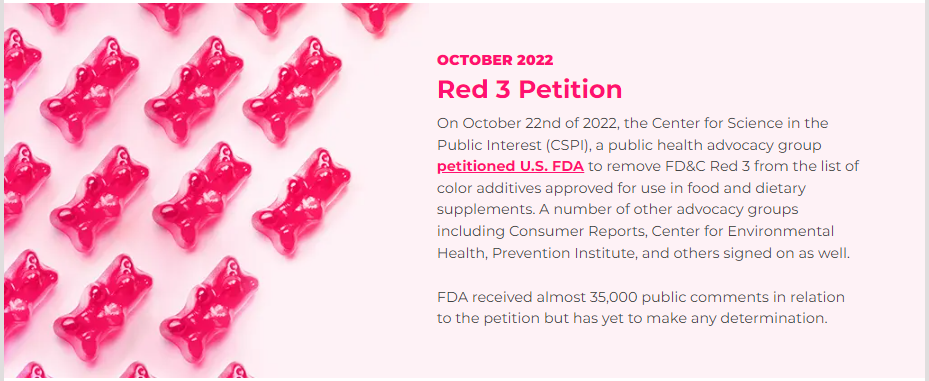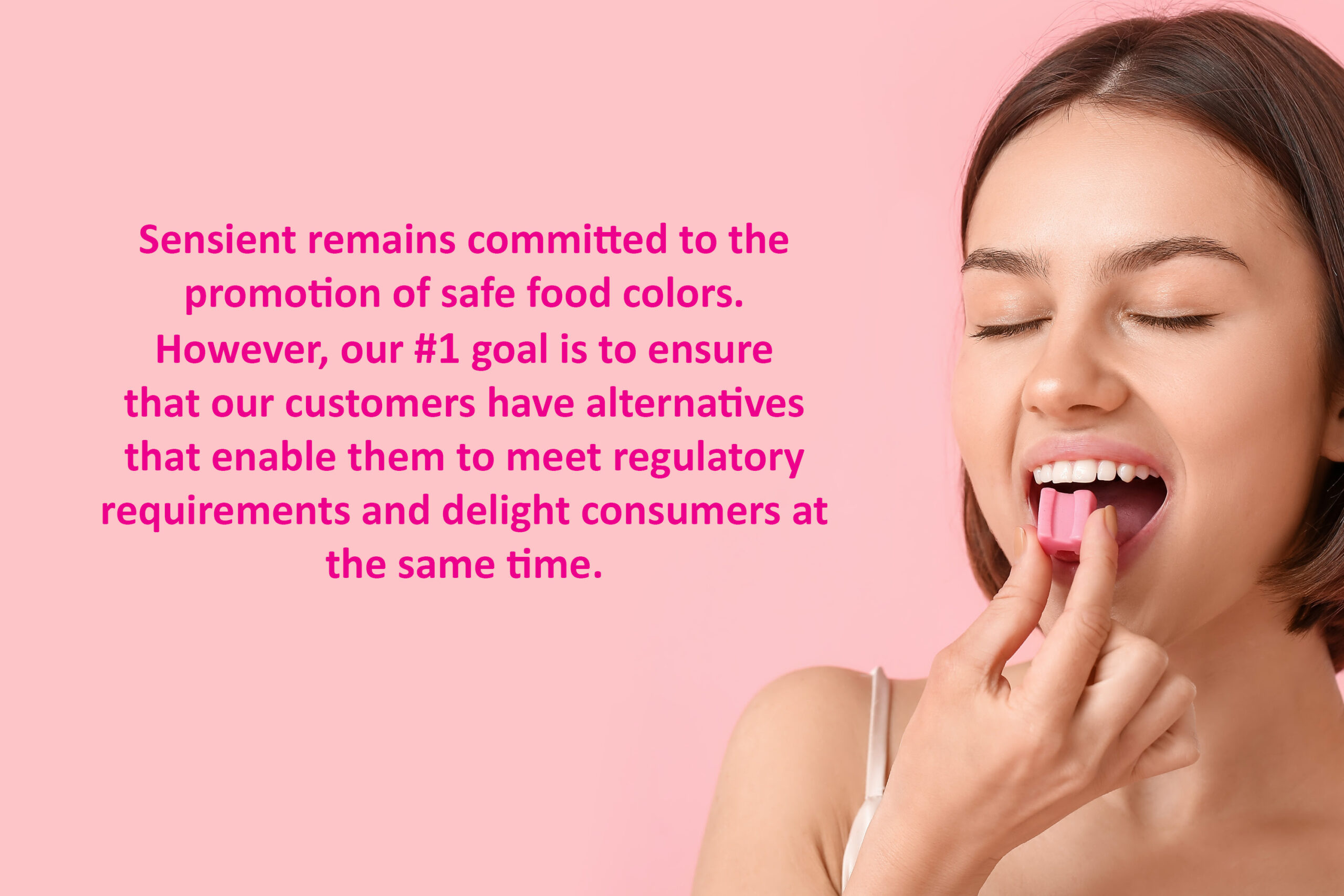TRENDS & INSIGHTS
Red 3 Under Review in the U.S.
Consumer advocacy groups in the United States are staging an attack against multiple food ingredients, including two widely used food colors. Unlike previous efforts to restrict the use of all synthetic colors, the more narrowly targeted approach appears to be achieving more success for the NGOs who oppose the ongoing use of FD&C Red #3.
Red 3 has experienced adverse regulatory decisions in the past. It was rejected for use in cosmetics by the FDA based on rodent studies in the 1970s and 1980s. The pink color, known as erythrosine outside the United States, continues to be widely accepted with the European Union, China, Canada and the United States among the jurisdictions that permit it as a food color.
In the past year, an unprecedented flurry of actions urging both regulatory and legislative bodies to ban or restrict the use of this color has occurred. The following summarizes what has transpired.

February 2023: California Assembly Bill
On February 2, 2022, California Assembly members Jesse Gabriel (D-Encino) and Buffy Wicks (D-Oakland) introduced bill 418 to the California Assembly, which would prohibit the manufacture or distribution of five food additives in the State of California. The five additives are:
- Potassium bromate
- Brominated vegetable oil
- Propyl paraben
- Titanium Dioxide
- FD&C Red 3
This is a concern for a large number of our customers, because in addition to the two permitted food colors, propyl paraben is sometimes used in color dispersions.
While Bill 418 would only apply to food manufactured or distributed in California, in practice this would prevent most major retailers and food brands from using the colors.
Many in the food industry argue that the bill undermines the federal regulatory system for overseeing food additives. Consumer Brands Association, a leading trade association for consumer packaged goods manufacturers, is one of the groups who oppose the bill.
Sarah Gallo, vice president of product policy stated recently that “Our companies follow rigorous safety standards and comply with regulations set by the FDA as well as the state. Unfortunately, this bill seeks to upend this existing and comprehensive science-based approval system for food and color additives.”
Nonetheless, the California Assembly passed Bill 418 and it now heads to the California Senate.
MARCH 2023
New York and New Jersey State Bills
Following closely behind California was New York State. On March 27, 2023 New York State Senator Brian Kavanagh (D-Brooklyn/Lower Manhattan) introduced identical legislation as the Gabriel bill in California. New Jersey Assemblyman Herbert Conaway Jr. (D-Burlington) followed with the same legislation on May 11, 2023.
The bills in New York and New Jersey would prohibit the sale and manufacture of the same additives targeted in California bill 418. While neither of these bills are as far along in the legislative process, both could potentially have the same impact.
February 2024
Kentucky Concurrent Resolution 103
On February 2, 2024, Concurrent Resolution 103 was introduced urging the U.S. FDA to mandate and enforce a prohibition on U.S. food manufacturers producing or selling food containing ingredients (such as Red 3) that have been banned by several other countries.
Pennsylvania House Co- Sponsorship Memo
On February 28,2024, Rep. Natalie Mihalek and Melissa Shusterman issued a memo about a package of bills that will be introduced to prohibit the use of Red 3, Yellow 5 and 6, potassium bromate, brominated vegetable oil, and BHA.
Bill 1 (Mihalek)- will focus on food dyes: Red 3, Yellow 5, and Yellow 6.
Bill 2 (Shusterman)- will focus on chemicals such as potassium bromate, brominated vegetable oil, and BHA.

What Is Sensient Planning?
As such, we are working on developing the industry’s leading solutions to replace Red 3. Fortunately, having anticipated a need several years ago, we have solutions.
Our Microfine™ dispersions, heat-stable Uberbeet™, and Watermelon-Rose natural colors are some of the technologies we employ to match the unique Red 3 shade. Our technical team also has synthetic-natural blends that are effective in some cases.
Our R&D team continues to develop innovative solutions to solve all the color challenges our customers experience. That is the commitment at Sensient.
Let's Get Started!
Request a consult with one of Sensient's technical experts and we can shade match a Red 3 alternative.


